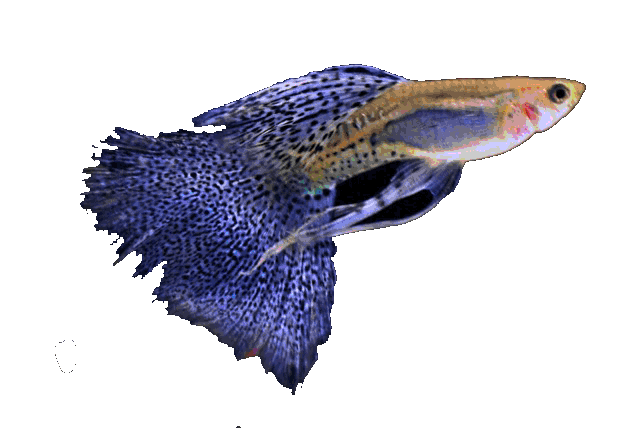
Family Goodeidae - live-bearing Mexican carp
DSJordan & Gilbert, 1883
The family Goodeidae is divided into two subfamilies, Goodeinae and Empetrichthyinae.
Goodeinae is endemic in shallow freshwater habitats in Mexico between 17 ° and 23 ° north latitude, longitudinally along Mexico central area west of Mexico City.
There are about 45 species Goodeinae in 19 genera. (2017)
Empetrichthyinae se located in the southwest "Great Basin" in the United States, and contains 4 species in two genera. (not alive)
The family was named after an ichthyologist George Brown Goode . Goode was a member of the National Academy of Sciences and the American Academy of Sciences and Arts. He was also the author of numerous books, reports and scientific notes, many more if he had not died prematurely at the age of 45 from pneumonia.
A characteristic feature of the Goodeidae family is their reproduction.
Fertilization is internal, which is achieved by a transformed anal fin called an andropodium, (the first few rays of the anal fin are separated from the fin by a small notch, are slightly shorter and with their help fertilization is possible).
Females have a single ovary that is morphologically altered to allow egg reproduction, internal fertilization, and pregnancy alone. The ovarian cavity is lined with embryonic epithelium, during the development of the embryo the nutritional role is soon taken over by trophotenia (trophe - nutrients, taenia - ligament), which has a function similar to the placenta (placenta) in mammals. The eggs are small and have very little yolk, the eggshell is removed from the embryos in a few days.
Egg yolks consume somewhat quickly and develop later they do not feed on the egg bladder like live-bearing animals of the family Poeciliidae. In early development the embryo from the intestinal cells develops trophotenia in the area of the later posterior opening. Trophotenia takes care of nutrient exchange and oxygen between mother and embryo, and it is visible for another day or two after birth offspring. Ataeniobius toweri is the only representative that does not develop trophothenia.


Trophothenia
Trophothenia
The female does not store sperm, as is typical of the family Poecillidae, but must be fertilized each time. Males of Mexican carp form “spermatozeugmate,” that is, “packets” of thousands of sperm in a sort of gelatinous cluster.
Males have the inner muscular tube called the “pseudophal” this connects the genitals to the vas deferens.
Anal fin single
Family classification
Kingdom: Animalia / animals
Trunk: Chordata / string players
Class: Actinopterygii / arthropods
Order: Cyprinodontiformes / Toothpicks
Family: Goodeidae / live-bearing Mexican carp
Subfamily: Empetrichthyinae Jordan, Evermann & Clark, 1930
Crenichthys - Hubbs, 1932 (2)
Empetrichthys - Gilbert, 1893 (2)
Subfamily: Goodeinae
Jordan & Gilbert, 1883
Allodontichthys - Hubbs & Turner, 1939 (4)
Alloophorus - Hubbs & Turner, 1939 (1)
Allotoca - Hubbs & Turner, 1939 (7)
Ataeniobius - Hubbs & Turner, 1939 (1)
Chapalichthys - Meek, 1902 (2)
Goodea - Jordan, 1880 (1)
Hubbsina (1)
Ilyodon- Eigenmann, 1907 (2)
Neoophorus (1)
Neotoca (1)
Xenoophorus - Hubbs & Turner, 1939 (1)
Xenotaenia - Turner, 1946 (1)
Xenotoca - Hubbs & Turner, 1939 (2)
" Xenotoca " " (5)
Source: GBIF & WoRMS & ADW Ref. GWG - Oct. 2019

Internal mechanism of fin movement
Plavut
Andropodium
Difference of anal fin transformation of two subfamilies
Family Poeciliidae - Poeciliinae

Family Goodeidae - Goodeinae

About them
Most representatives and families alive v swimming pools, ponds in lakes (e.g. Xenotoca, Skiffia, Zoogoneticus ).
Ker is an area of residence composed mainly of limestone are adapted to hard water with a neutral or basic pH. The area where they live is characterized by significant fluctuations in temperature and lack of rainfall.
Most species grow quite quickly and are sexually mature at six months. Smaller species have a lifespan of 3 years, medium 4 and older up to 10 years. In nature, they have subdued light with an abundance of vegetation covering the water surface, a quality filter and an adapted water flow according to the species. They have a varied diet that varies by species. We do not feed them high protein foods. We do not remove algae from their aquariums as they are the source of their diet (they also tackle filamentous algae, some species also eat blue-green algae).
The family is not susceptible to the disease if we take care of it winter (colder) conditions, high and constant temperatures (more as 25 ° C) lead to fall resistance in fish become more susceptible for diseases, especially tuberculosis (visible ulcers on the skin). Pathogenic bacteria thrive better at higher temperatures (above 26 ° C), the virulence of pathogens is greatly increased.
As a family, Mexican carp are endangered in the wild, and fish are in great trouble due to the destruction of their habitat and pollution. In the last ten to fifteen years, the number has been declining sharply and some species have practically become extinct in nature, while the fate of others is quite uncertain. Goodeid Working Group is one of the organizations that deals by preserving species and natural habitats, aquarists are of great importance here because we make sure that species are artificially introduced into aquariums and thus prevent their complete extinction.
When breeding species, it is very important to keep the local version of the species clean and not mix it with another version! Localized variants differ in morphological (physical) characteristics, mixing leads to hybridization, which is unacceptable.
Examples habitat







